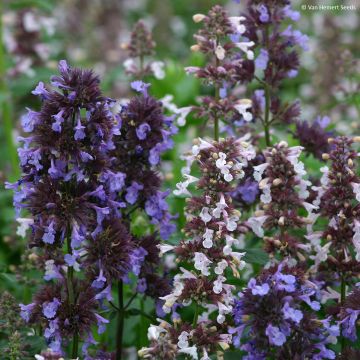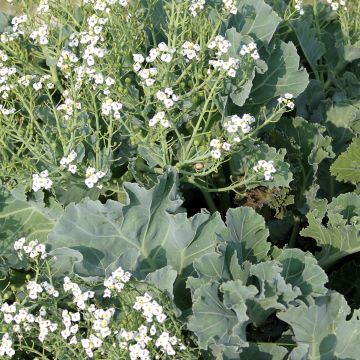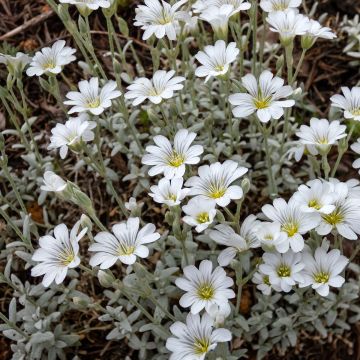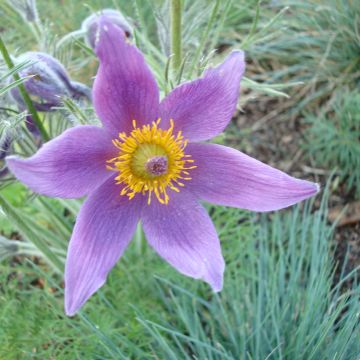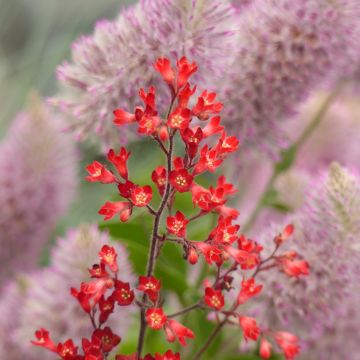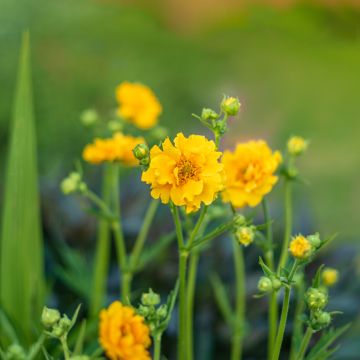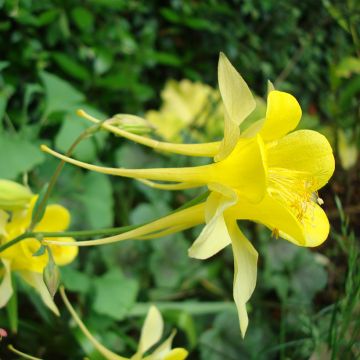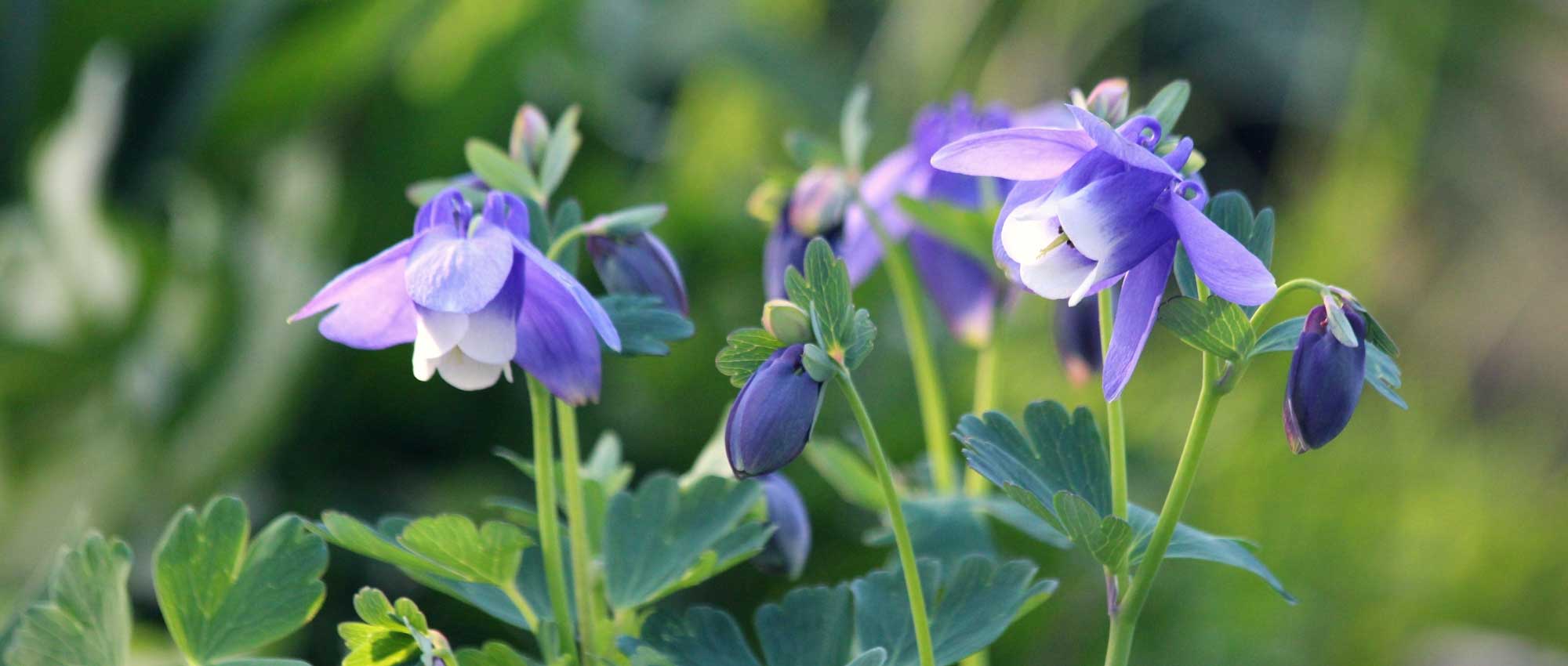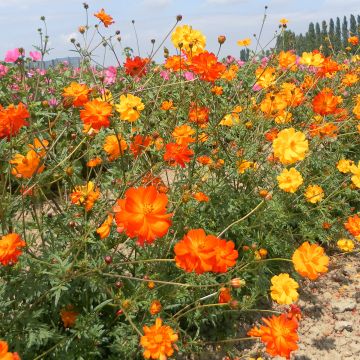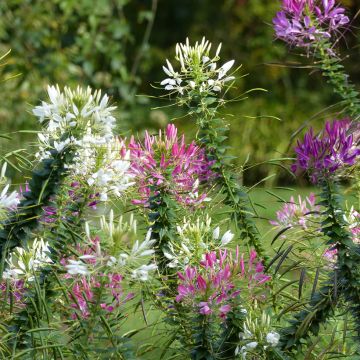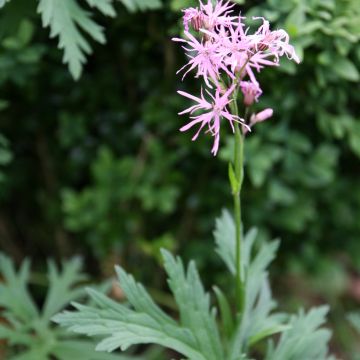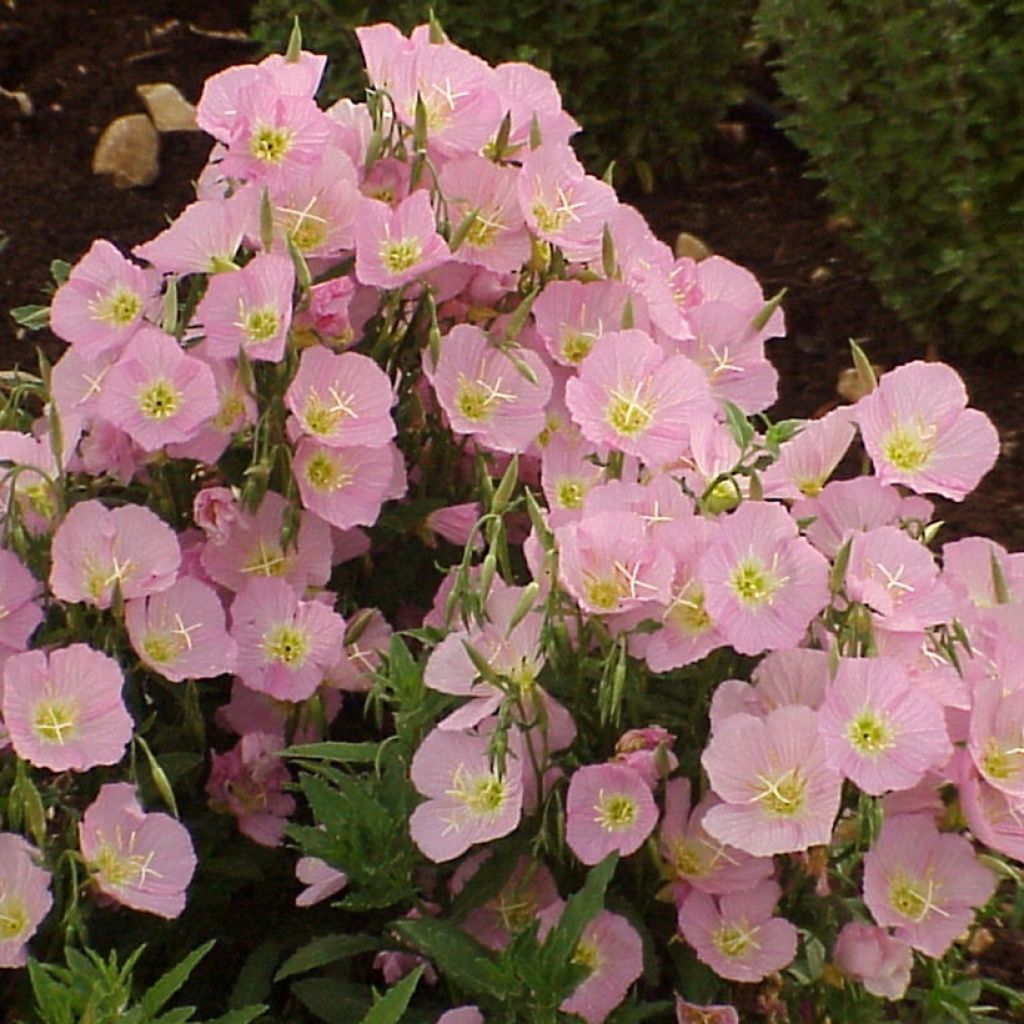

Oenothera speciosa Evening Pink Seeds - Evening Primrose
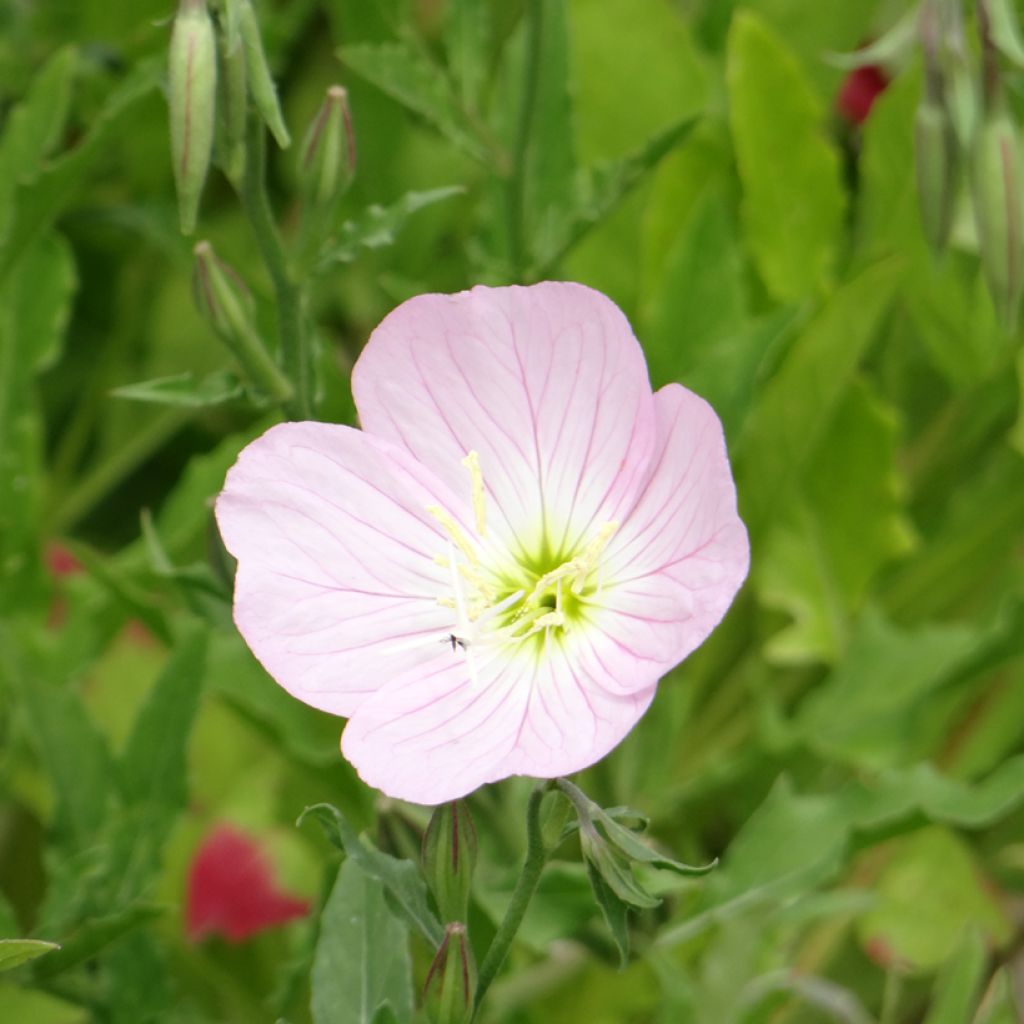

Oenothera speciosa Evening Pink Seeds - Evening Primrose
Oenothera speciosa Evening Pink Seeds - Evening Primrose
Oenothera speciosa Evening Pink
Evening Primrose, Pink Evening Primrose, Mexican Evening Primrose
Special offer!
Receive a €20 voucher for any order over €90 (excluding delivery costs, credit notes, and plastic-free options)!
1- Add your favorite plants to your cart.
2- Once you have reached €90, confirm your order (you can even choose the delivery date!).
3- As soon as your order is shipped, you will receive an email containing your voucher code, valid for 3 months (90 days).
Your voucher is unique and can only be used once, for any order with a minimum value of €20, excluding delivery costs.
Can be combined with other current offers, non-divisible and non-refundable.
Home or relay delivery (depending on size and destination)
Schedule delivery date,
and select date in basket
This plant carries a 6 months recovery warranty
More information
We guarantee the quality of our plants for a full growing cycle, and will replace at our expense any plant that fails to recover under normal climatic and planting conditions.
Would this plant suit my garden?
Set up your Plantfit profile →
Description
Oenothera speciosa 'Evening Pink', also known as Pink Evening Primrose or Elegant Evening Primrose, is a charming rhizomatous perennial that can be exuberant in the sun, in dry soils, even rocky ones. It seduces with its abundant summer flowering, in the form of pale pink cup-shaped, fragrant and nectar-rich flowers. They open in the late afternoon, with the blooming carpet appearing almost fluorescent in the twilight. Although hardy, this evening primrose requires well-drained soil that will protect its roots from winter moisture.
The Pink Evening Primrose belongs to the Onagraceae family, a large family of perennials, biennials, and annuals, which includes more than 120 species. It is a short-lived perennial native to the Southwest United States and Mexico, where it grows in large colonies in rocky meadows, open forests, slopes, roadside edges, and disturbed areas. Its origins are a guarantee of resistance to heat and summer drought. Anchored on a strong taproot system, the plant forms a compact clump, reaching a height of 40 cm, with a tendency to spread in a slightly loose carpet. It blooms abundantly from May-June to September, depending on the climate, on arching and downy stems that intertwine lazily. Its fragrant flowers, with 4 petals, open in 3-4 cm wide cups, and are adorned with a lemon yellow heart and stamens. They are white-pinkish when they open in the evening, then take on a deeper pink hue as the hours go by, before closing when the sun is at its zenith. They only live for a few hours, but renew themselves every day. The foliage consists of alternate, 8-10 cm long and 3-4 cm wide leaves, with variable shapes, linear to obovate, with a toothed or wavy edge. This semi-evergreen foliage turns red when temperatures rise or fall. The fruit is a long four-angled capsule that contains numerous seeds.
It should be noted that 'Evening Pink' Pink Evening Primrose is sturdy, hardy, and undemanding. It can be used as a ground cover plant, in a dry rock garden, on a difficult slope, or along a gravel path. It will also stand out in a dry meadow where few plants thrive. We recommend combining the evening primrose with a collection of aromatic perennials in soft colours to create a poetic and fragrant scene. It will blend beautifully with white, mauve, or pink Centranthus ruber, Perovskia, artemisias, and Erigeron karvinskianus 'Lavender Lady' that can be added in small touches, like composing a painting. Finally, this evening primrose is stunning in hanging baskets, where it will require more water!
Note: Oenothera speciosa can be invasive under appropriate climatic conditions.
Report an error about the product description
Flowering
Foliage
Plant habit
Botanical data
Oenothera
speciosa
Evening Pink
Onagraceae
Evening Primrose, Pink Evening Primrose, Mexican Evening Primrose
Hartmannia speciosa , Oenothera delessertiana , Oenothera speciosa var. enfantsi
North America
Other Perennial flower seeds
View all →Planting and care
Sowing:
In February-March, in a warm (18°C) greenhouse, in a seed tray or in a pot with seed compost. You can also sow in ready-to-use pellets. Cover your sowing to maintain a high humidity level to activate germination. Keep the soil moist until germination, then uncover to prevent rotting (damping off).
From April to July (depending on the climate and region), sow directly in well-prepared soil, loosened and free of any "weeds". Crumble the soil and, if necessary, mix in compost or well-rotted organic matter.
Pricking out:
For early sowings in a warm environment, transplant into 9 cm pots with milti-purpose compost. Allow the seedlings to establish by watering moderately, but not excessively. When the plant roots start to cover the sides of the pot, you can transplant them into the garden, 50 cm apart.
For direct sowings, thin out if necessary, leaving a spacing of 50 cm between each plant.
You will need to resow every 3-4 years, as this perennial has a relatively short lifespan.
Cultivation:
Be careful not to bend the taproot when planting. This plant is very hardy and easy to grow in full sun, in any poor, sandy or rocky, limestone soil. It is difficult to grow in heavy, fertile soil or in a humid winter region. It dislikes soils that retain moisture in winter, as this can cause root rot. If you take care to cut back the flower stems after flowering, the plant will produce new rosette foliage at ground level, providing good ground cover until the frosts.
Sowing period
Intended location
Planting & care advice
This item has not been reviewed yet - be the first to leave a review about it.
Similar products
Haven't found what you were looking for?
Hardiness is the lowest winter temperature a plant can endure without suffering serious damage or even dying. However, hardiness is affected by location (a sheltered area, such as a patio), protection (winter cover) and soil type (hardiness is improved by well-drained soil).

Photo Sharing Terms & Conditions
In order to encourage gardeners to interact and share their experiences, Promesse de fleurs offers various media enabling content to be uploaded onto its Site - in particular via the ‘Photo sharing’ module.
The User agrees to refrain from:
- Posting any content that is illegal, prejudicial, insulting, racist, inciteful to hatred, revisionist, contrary to public decency, that infringes on privacy or on the privacy rights of third parties, in particular the publicity rights of persons and goods, intellectual property rights, or the right to privacy.
- Submitting content on behalf of a third party;
- Impersonate the identity of a third party and/or publish any personal information about a third party;
In general, the User undertakes to refrain from any unethical behaviour.
All Content (in particular text, comments, files, images, photos, videos, creative works, etc.), which may be subject to property or intellectual property rights, image or other private rights, shall remain the property of the User, subject to the limited rights granted by the terms of the licence granted by Promesse de fleurs as stated below. Users are at liberty to publish or not to publish such Content on the Site, notably via the ‘Photo Sharing’ facility, and accept that this Content shall be made public and freely accessible, notably on the Internet.
Users further acknowledge, undertake to have ,and guarantee that they hold all necessary rights and permissions to publish such material on the Site, in particular with regard to the legislation in force pertaining to any privacy, property, intellectual property, image, or contractual rights, or rights of any other nature. By publishing such Content on the Site, Users acknowledge accepting full liability as publishers of the Content within the meaning of the law, and grant Promesse de fleurs, free of charge, an inclusive, worldwide licence for the said Content for the entire duration of its publication, including all reproduction, representation, up/downloading, displaying, performing, transmission, and storage rights.
Users also grant permission for their name to be linked to the Content and accept that this link may not always be made available.
By engaging in posting material, Users consent to their Content becoming automatically accessible on the Internet, in particular on other sites and/or blogs and/or web pages of the Promesse de fleurs site, including in particular social pages and the Promesse de fleurs catalogue.
Users may secure the removal of entrusted content free of charge by issuing a simple request via our contact form.
The flowering period indicated on our website applies to countries and regions located in USDA zone 8 (France, the United Kingdom, Ireland, the Netherlands, etc.)
It will vary according to where you live:
- In zones 9 to 10 (Italy, Spain, Greece, etc.), flowering will occur about 2 to 4 weeks earlier.
- In zones 6 to 7 (Germany, Poland, Slovenia, and lower mountainous regions), flowering will be delayed by 2 to 3 weeks.
- In zone 5 (Central Europe, Scandinavia), blooming will be delayed by 3 to 5 weeks.
In temperate climates, pruning of spring-flowering shrubs (forsythia, spireas, etc.) should be done just after flowering.
Pruning of summer-flowering shrubs (Indian Lilac, Perovskia, etc.) can be done in winter or spring.
In cold regions as well as with frost-sensitive plants, avoid pruning too early when severe frosts may still occur.
The planting period indicated on our website applies to countries and regions located in USDA zone 8 (France, United Kingdom, Ireland, Netherlands).
It will vary according to where you live:
- In Mediterranean zones (Marseille, Madrid, Milan, etc.), autumn and winter are the best planting periods.
- In continental zones (Strasbourg, Munich, Vienna, etc.), delay planting by 2 to 3 weeks in spring and bring it forward by 2 to 4 weeks in autumn.
- In mountainous regions (the Alps, Pyrenees, Carpathians, etc.), it is best to plant in late spring (May-June) or late summer (August-September).
The harvesting period indicated on our website applies to countries and regions in USDA zone 8 (France, England, Ireland, the Netherlands).
In colder areas (Scandinavia, Poland, Austria...) fruit and vegetable harvests are likely to be delayed by 3-4 weeks.
In warmer areas (Italy, Spain, Greece, etc.), harvesting will probably take place earlier, depending on weather conditions.
The sowing periods indicated on our website apply to countries and regions within USDA Zone 8 (France, UK, Ireland, Netherlands).
In colder areas (Scandinavia, Poland, Austria...), delay any outdoor sowing by 3-4 weeks, or sow under glass.
In warmer climes (Italy, Spain, Greece, etc.), bring outdoor sowing forward by a few weeks.






























